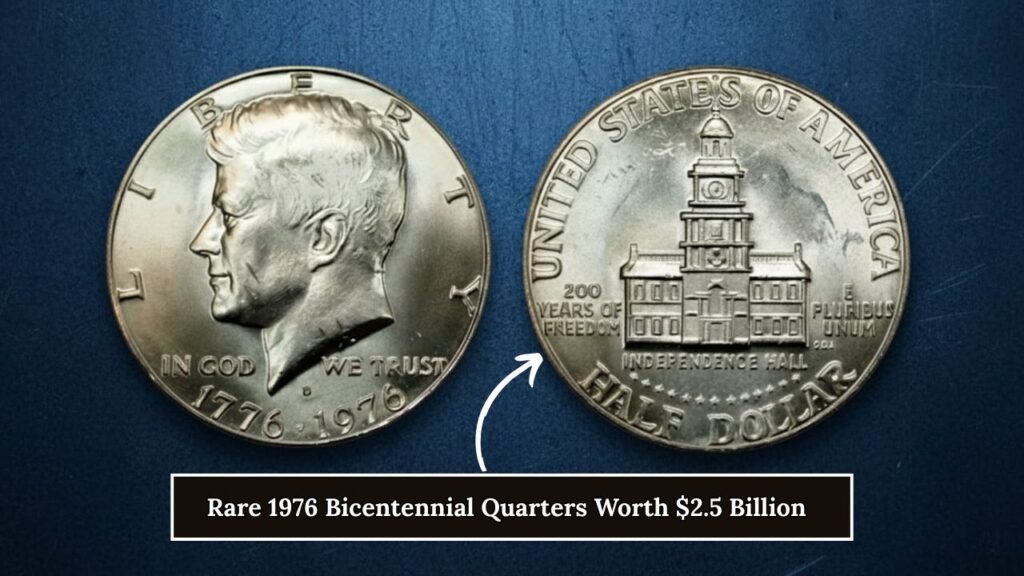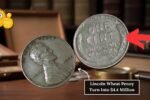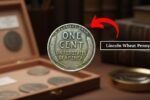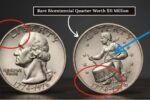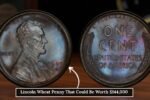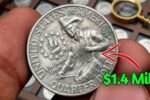Your spare change might be worth far more than you think. Among everyday coins still in circulation, some rare 1976 Bicentennial Quarters have become highly sought after by collectors. Certain coins have sold for tens of thousands — even hundreds of thousands of dollars. Experts estimate that undiscovered rare coins like these could collectively represent over $2.5 billion in hidden value across the U.S. Before you dump your coins into a jar, it’s worth taking a closer look.
The Story Behind the Bicentennial Quarter
In 1976, the U.S. Mint released a special quarter to commemorate America’s 200th anniversary. The coin featured a dual date — 1776–1976 — and a reverse design of a colonial drummer by artist Jack L. Ahr, replacing the traditional eagle design. It quickly became a symbol of national pride.
Millions of these quarters were minted at the Philadelphia, Denver, and San Francisco mints. While most are worth face value (25 cents), a small portion features rare minting errors, special compositions, or proof finishes, boosting their value exponentially.
Why Some Bicentennial Quarters Are Valuable
The value of a Bicentennial quarter comes primarily from rarity, either due to mint errors or limited special editions. The most prized types include:
| Type of Rare Quarter | Description | Estimated Value |
|---|---|---|
| Silver Composition Coins | 40% silver quarters from the San Francisco Mint for proof sets | $100–$500+ |
| Double Die Errors | Letters or drummer details appear doubled due to die striking twice | $1,000–$15,000 |
| Off-Center Strikes & Clipped Planchets | Coins struck off-center or missing a piece of metal | $500–$5,000+ |
| Proof Coin Variations | Collector proof coins with mirror-like surfaces that entered circulation | $2,000–$5,000 |
| Experimental Alloy Quarters | Rare test coins with unusual metal compositions | $10,000+ |
How to Identify a Valuable Bicentennial Quarter
To spot a potentially valuable coin, check for the following:
- Mint Mark – Look near Washington’s hair ribbon. “S” marks often indicate proof or silver versions.
- Edge Inspection – Regular quarters have copper edges; silver coins have a consistent silver edge.
- Weight – Standard quarters weigh 5.67 grams; silver versions weigh 6.25 grams.
- Examine for Errors – Check for doubling, off-center images, or missing details using a magnifier.
- Professional Grading – Send unusual coins to PCGS or NGC for authentication.
Hidden Wealth in Plain Sight
Millions of Bicentennial quarters are still in circulation today, tucked in drawers, piggy banks, or inherited collections. While most remain ordinary, rare examples could collectively be worth billions if rediscovered by collectors and numismatists.
Final Thoughts
The 1976 Bicentennial Quarter is more than a nostalgic keepsake — it could be a key to hidden treasure. From silver proofs to minting errors, these coins continue to fetch record-breaking prices. Before you spend your loose change, take a closer look — you might be holding part of the $2.5 billion treasure still waiting to be found..
FAQs
How can I tell if my Bicentennial quarter is rare?
Check the mint mark, weight, edge color, and inspect for errors.
Are all silver Bicentennial quarters valuable?
Only those in excellent condition or with proof/collector finishes carry high value.
Can double die errors occur on other coins?
Yes, double die errors happen on various U.S. coins, not just Bicentennial quarters.
Where can I sell a rare quarter?
Professional coin dealers, auction houses, or online numismatic marketplaces.
Is it worth getting every unusual quarter graded?
If a coin looks unusual or shows errors, professional grading can significantly increase its market value.
